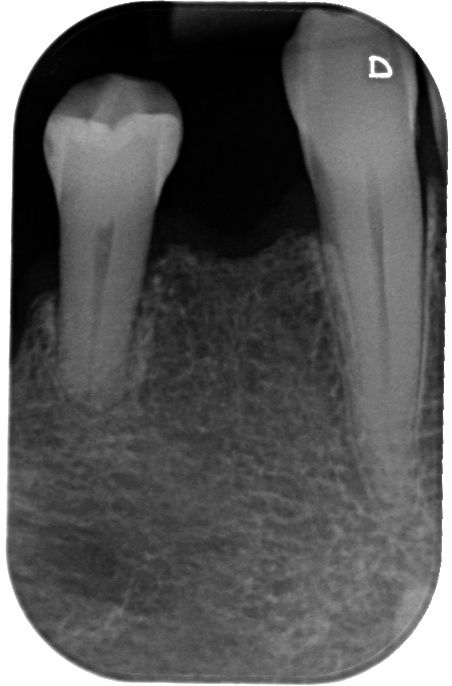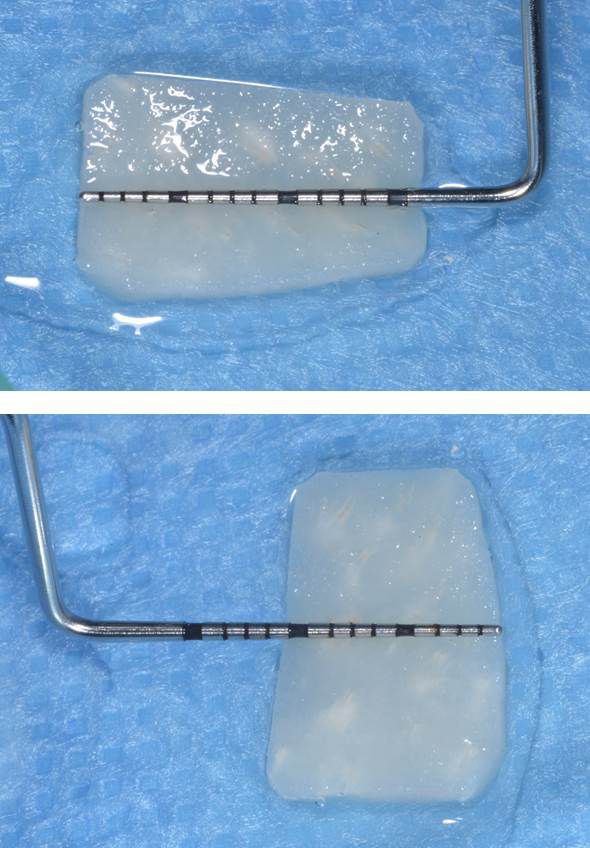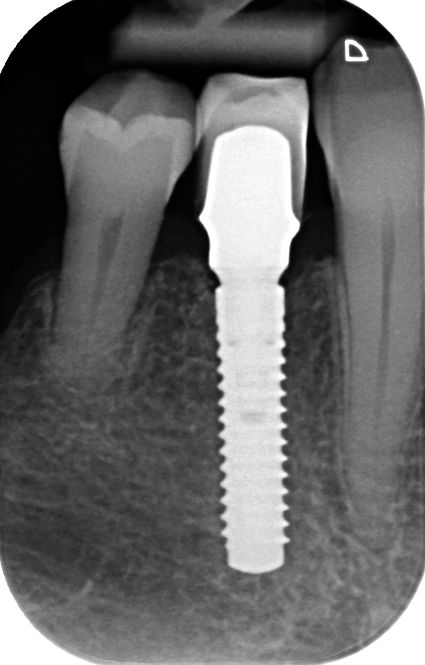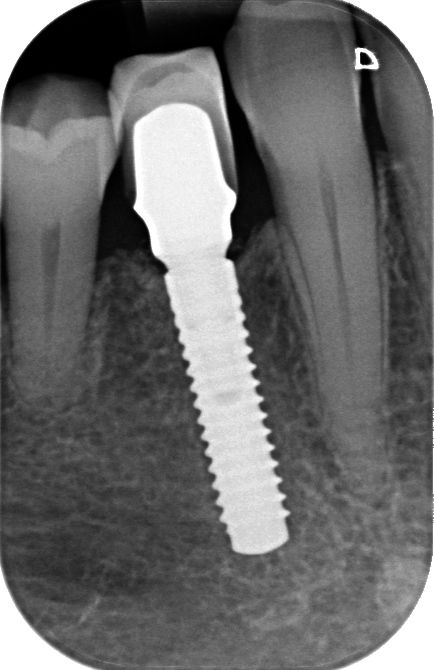In this case, the patient refused to have the bone volume increased by means of a block graft or GBR technique in a two-step approach. Therefore she was offered a less invasive protocol with a single surgical step and a minimally invasive flap, GBR and use of botiss mucoderm® for horizontal tissue augmentation.
Initial situation
The patient was a 72-year-old woman who wanted to replace a missing lower right posterior tooth in position #44 that had been extracted many years ago, with a dental implant. The general periodontal state of the patient could be described as moderately compromised. Reported comorbidities included gastritis, gastroesophageal reflux, with easy retching and bruxism, as was apparent by the wear on teeth facets shown in Figs. 2 and 3.
Treatment planning
Clinical examination revealed severe ridge resorption, accompanied by thin soft tissue in the position #44. Intraoral X-ray showed sufficient space between the roots for a 3.3 mm Straumann® BL implant (Fig. 1). However, the ridge was very thin and required horizontal augmentation in order to produce sufficient bone for implant placement (Figs. 2,3). Since she refused to have the bone volume increased by means of a block graft or GBR technique in a two-step approach, she was offered a less invasive protocol with a single surgical step and a minimally invasive flap, GBR and use of mucoderm® for horizontal tissue augmentation.
Surgery































